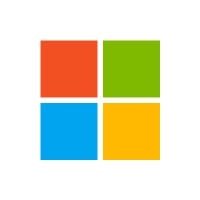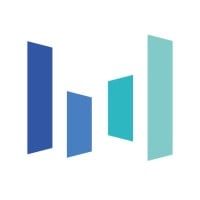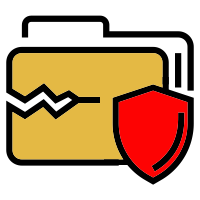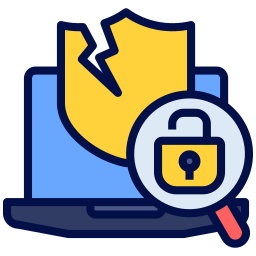
Lazada Company Cyber Security Posture
lazada.comAbout Lazada Group Founded in 2012, Lazada Group is the leading eCommerce platform in Southeast Asia. We are accelerating progress in Indonesia, Malaysia, the Philippines, Singapore, Thailand and Vietnam through commerce and technology. With the largest logistics and payments networks in the region, Lazada is a part of our consumers’ daily lives in the region and we aim to serve 300 million shoppers by 2030. Since 2016, Lazada is the Southeast Asia flagship platform of the Alibaba Group powered by its cutting-edge technology infrastructure.
Lazada Company Details
lazada
21074 employees
1236234.0
511
Software Development
lazada.com
Scan still pending
LAZ_9818551
In-progress
Between 900 and 1000
This score is AI-generated and less favored by cyber insurers, who prefer the TPRM score.
 Lazada Global Score
Lazada Global Score.png)

Lazada Company Scoring based on AI Models
| Model Name | Date | Description | Current Score Difference | Score |
|---|---|---|---|---|
| AVERAGE-Industry | 03-12-2025 | This score represents the average cybersecurity rating of companies already scanned within the same industry. It provides a benchmark to compare an individual company's security posture against its industry peers. | N/A | Between 900 and 1000 |
Lazada Company Cyber Security News & History
| Entity | Type | Severity | Impact | Seen | Url ID | Details | View |
|---|---|---|---|---|---|---|---|
| Alibaba.com | Breach | 100 | 5 | 09/2018 | ALI212330922 | Link | |
Rankiteo Explanation : Attack threatening the organization's existenceDescription: Chinese police arrested 21 suspects for theft of customer information from Alibaba Group Holding’s logistics affiliate Cainiao Network. More than 10 million pieces of client data was compromised. Compromised information includes user names, phone numbers and parcel tracking numbers. Barcode scanners used in its distribution stations had been infected with malware. Police investigation determined that none of the illegally obtained data had been shared with any third parties. | |||||||
| Alibaba Group | Data Leak | 85 | 4 | 09/2018 | ALI138311022 | Link | |
Rankiteo Explanation : Attack with significant impact with customers data leaksDescription: Chinese police arrested 21 suspects in connection with the theft of customer information from Alibaba Group Holding’s logistics affiliate Cainiao Network. More than 10 million pieces of client data including user names, phone numbers and parcel tracking numbers were stolen from Cainiao. Barcode scanners used in its distribution stations had been infected with malware. The security breach had now been fixed. It had detected a suspicious malware infection in some of the parcel scanners used by its logistics partners. None of the illegally obtained data had been shared with any third parties. | |||||||
| Alibaba Group | Data Leak | 60 | 3 | 01/2020 | ALI150121222 | Link | |
Rankiteo Explanation : Attack with significant impact with internal employee data leaksDescription: An Alibaba-owned project called City Brain has advanced video and processing ability for facial detection, real-time information statistics and feeds, crime and traffic offenders, and much more. City Brain exposed its own data via elastic search engine instances that were left open without any authentication It left all the data from its processing open for anybody to view. It involved 56GB of data across 22 indices that appeared to be a mix of test and production naming. Within the indices were links to a cloud system for City Brain vendors. Links and indices revealed that the data belongs to which city. Luzhou and Hangzhou are both well-known cities involved with the City Brain program. | |||||||
| RedMart | Data Leak | 85 | 4 | 10/2023 | RED4498523 | Link | |
Rankiteo Explanation : Attack with significant impact with customers data leaksDescription: A customer database containing the private information of 1.1 million RedMart user accounts was breached, and this information was then sold on an internet forum. The data leak was confirmed by a representative for e-commerce behemoth Lazada, which also owns e-grocer Redmart. It was discovered that the stolen personal data included names, phone numbers, e-mail addresses, mailing addresses, passwords that were encrypted, and a portion of credit card numbers. Customers were also cautioned by Lazada to watch out for phishing emails, in which con artists pose as Lazada representatives and request critical information. | |||||||
| Alibaba Group | Data Leak | 85 | 3 | 09/2020 | ALI11519623 | Link | |
Rankiteo Explanation : Attack with significant impact with internal employee data leaksDescription: Alibaba, a Chinese tech giant, was found to have servers that were used for data theft, with at least 72 servers sending data to China. Media have been informed by reputable intelligence sources that Chinese data cloud servers are transmitting user data from India to China and that equipment from Chinese technology giant Alibaba located in India may be implicated. According to reports, companies engaged in such operations have close ties to the Chinese government or the Chinese Communist Party. Intelligence agents have estimated that 72 servers are involved in the transfer of Indian user data to China and have alerted the media that a thorough investigation may soon begin to uncover Chinese cyber espionage intentions in the nation. | |||||||
Lazada Company Subsidiaries

About Lazada Group Founded in 2012, Lazada Group is the leading eCommerce platform in Southeast Asia. We are accelerating progress in Indonesia, Malaysia, the Philippines, Singapore, Thailand and Vietnam through commerce and technology. With the largest logistics and payments networks in the region, Lazada is a part of our consumers’ daily lives in the region and we aim to serve 300 million shoppers by 2030. Since 2016, Lazada is the Southeast Asia flagship platform of the Alibaba Group powered by its cutting-edge technology infrastructure.
Access Data Using Our API

Get company history
.png)
Lazada Cyber Security News
Here’s what you should do if your customer data is breached online
Customer data breaches can happen to anyone, but there are ways to defend against or mitigate such incidents. With the rise of e-commerce ...
Alibaba-owned Lazada suffers data breach for its grocery delivery business in Singapore
Southeast Asian e-commerce firm Lazada said last week it detected a data breach that exposed personal details of many users in Singapore.
Lazada denies data breach
Online shopping platform Lazada has denied claims that records of about 18 million customers have been breached.
LAZADA GROUP RELEASES ANNUAL ENVIRONMENTAL, SOCIAL AND GOVERNANCE (ESG) IMPACT REPORT FOR FINANCIAL YEAR 2024
PRNewswire/ -- Lazada, a leading eCommerce platform in Southeast Asia, today released its annual Environment, Social, and Governance (ESG) ...
Lazada denies data breach: no matches found in customer database
Earlier today, Infosecdad reported that personal information from Lazada Philippines was being sold on a Chinese hacking forum. Despite these allegations, ...
Southeast Asia eCommerce platform Lazada launches public bug bounty program with YesWeHack
Focused on vulnerabilities of personal data, Lazada will pay out up to US$10000 in rewards to ethical hackers SINGAPO.
RedMart security breach should come as no surprise, highlights importance of integration plan
Lazada has made public missteps since integrating the grocery app into its own platform, so it should come as no surprise an overlooked 'out ...
Over 34 Million Records From 17 Companies Including Lazada and Eatigo Listed for Sale on Hacker Forum
A threat actor is selling account databases on an underground hacking forum. The database is an aggregate total of 34 million user records ...
Lazada’s live bug bounty uncovers 115 vulnerabilities
Share this story: Tags: cybersecurity · e-commerce. Categories:: Applications · Digital Transformation · Enterprise · Innovation · Uncategorized.

Lazada Similar Companies

CRIS; A Autonomous Society under the Ministry of Indian Railways
Ministry of Railways established the CENTRE FOR RAILWAY INFORMATION SYSTEMS (CRIS), Chanakya Puri, New Delhi - 21 to be an umbrella organisation for all computer activities on Indian Railways (IR).They also entrusted it with the task of design, development and implementation of the FOIS, alongwith i

Microsoft
Every company has a mission. What's ours? To empower every person and every organization to achieve more. We believe technology can and should be a force for good and that meaningful innovation contributes to a brighter world in the future and today. Our culture doesn’t just encourage curiosity; it

JD.COM
JD.com, also known as Jingdong, is a leading e-commerce company transferring to be a technology and service enterprise with supply chain at its core. JD.com’s business has expanded across retail, technology, logistics, health, insurance, property development, industrials, private label, and internat

Bosch Global Software Technologies
With our unique ability to offer end-to-end solutions that connect the three pillars of IoT - Sensors, Software, and Services, we enable businesses to move from the traditional to the digital, or improve businesses by introducing a digital element in their products and processes. Now more than ever

KPIT
KPIT Technologies is a global partner to the automotive and mobility ecosystem for making software-defined vehicles a reality. It is a leading independent software development and integration partner helping mobility leapfrog towards a clean, smart, and safe future. With 11,000+ automobelievers acro

ByteDance
ByteDance is a global incubator of platforms at the cutting edge of commerce, content, entertainment and enterprise services - over 2.5bn people interact with ByteDance products including TikTok. Creation is the core of ByteDance's purpose. Our products are built to help imaginations thrive. This i

Frequently Asked Questions
Explore insights on cybersecurity incidents, risk posture, and Rankiteo's assessments.
Lazada CyberSecurity History Information
How many cyber incidents has Lazada faced?
Total Incidents: According to Rankiteo, Lazada has faced 5 incidents in the past.
What types of cybersecurity incidents have occurred at Lazada?
Incident Types: The types of cybersecurity incidents that have occurred incidents Data Leak and Breach.
How does Lazada detect and respond to cybersecurity incidents?
Detection and Response: The company detects and responds to cybersecurity incidents through communication strategy with Customers were cautioned by Lazada to watch out for phishing emails. and law enforcement notified with True and remediation measures with Fixed the security breach and law enforcement notified with True.
Incident Details
Can you provide details on each incident?

Incident : Data Theft
Title: Alibaba Servers Used for Data Theft in India
Description: Alibaba, a Chinese tech giant, was found to have servers that were used for data theft, with at least 72 servers sending data to China.
Type: Data Theft
Attack Vector: Server-based data exfiltration
Threat Actor: Chinese government or Chinese Communist Party-linked entities
Motivation: Cyber espionage

Incident : Data Breach
Title: RedMart Data Breach
Description: A customer database containing the private information of 1.1 million RedMart user accounts was breached, and this information was then sold on an internet forum.
Type: Data Breach

Incident : Data Exposure
Title: City Brain Data Exposure
Description: An Alibaba-owned project called City Brain exposed its data via elastic search engine instances that were left open without any authentication. It left all the data from its processing open for anybody to view. It involved 56GB of data across 22 indices that appeared to be a mix of test and production naming. Within the indices were links to a cloud system for City Brain vendors. Links and indices revealed that the data belongs to which city. Luzhou and Hangzhou are both well-known cities involved with the City Brain program.
Type: Data Exposure
Attack Vector: Unauthenticated Elastic Search Engine Instances
Vulnerability Exploited: Open Elastic Search Instances

Incident : Data Breach
Title: Data Breach at Cainiao Network
Description: Chinese police arrested 21 suspects in connection with the theft of customer information from Alibaba Group Holding’s logistics affiliate Cainiao Network. More than 10 million pieces of client data including user names, phone numbers, and parcel tracking numbers were stolen from Cainiao. Barcode scanners used in its distribution stations had been infected with malware. The security breach has now been fixed.
Type: Data Breach
Attack Vector: Malware
Motivation: Data Theft

Incident : Data Breach
Title: Data Breach at Alibaba's Cainiao Network
Description: Chinese police arrested 21 suspects for theft of customer information from Alibaba Group Holding’s logistics affiliate Cainiao Network. More than 10 million pieces of client data was compromised, including user names, phone numbers, and parcel tracking numbers. Barcode scanners used in its distribution stations had been infected with malware. Police investigation determined that none of the illegally obtained data had been shared with any third parties.
Type: Data Breach
Attack Vector: Malware
Vulnerability Exploited: Infected Barcode Scanners
Threat Actor: 21 suspects arrested by Chinese police
Motivation: Theft of Customer Information
What are the most common types of attacks the company has faced?
Common Attack Types: The most common types of attacks the company has faced is Data Leak.
How does the company identify the attack vectors used in incidents?
Identification of Attack Vectors: The company identifies the attack vectors used in incidents through Barcode scanners.
Impact of the Incidents
What was the impact of each incident?

Incident : Data Theft ALI11519623
Data Compromised: User data from India

Incident : Data Breach RED4498523
Data Compromised: names, phone numbers, e-mail addresses, mailing addresses, encrypted passwords, a portion of credit card numbers

Incident : Data Exposure ALI150121222
Data Compromised: 56GB of data across 22 indices

Incident : Data Breach ALI138311022
Data Compromised: User names, phone numbers, parcel tracking numbers
Systems Affected: Barcode scanners

Incident : Data Breach ALI212330922
Data Compromised: User names, Phone numbers, Parcel tracking numbers
Systems Affected: Barcode scanners
What types of data are most commonly compromised in incidents?
Commonly Compromised Data Types: The types of data most commonly compromised in incidents are User data, Personal Information, Payment Information, User names, Phone numbers, Parcel tracking numbers, User names, Phone numbers and Parcel tracking numbers.
Which entities were affected by each incident?

Incident : Data Theft ALI11519623
Entity Type: Tech Company
Industry: Technology
Location: India, China

Incident : Data Breach RED4498523
Entity Type: E-commerce
Industry: E-grocer
Customers Affected: 1100000

Incident : Data Breach ALI138311022
Entity Type: Corporate
Industry: Logistics
Location: China
Customers Affected: More than 10 million

Incident : Data Breach ALI212330922
Entity Type: Logistics Company
Industry: Logistics
Location: China
Customers Affected: More than 10 million
Response to the Incidents
What measures were taken in response to each incident?

Incident : Data Breach RED4498523
Communication Strategy: Customers were cautioned by Lazada to watch out for phishing emails.

Incident : Data Breach ALI138311022
Law Enforcement Notified: True
Remediation Measures: Fixed the security breach

Incident : Data Breach ALI212330922
Law Enforcement Notified: True
Data Breach Information
What type of data was compromised in each breach?

Incident : Data Breach RED4498523
Type of Data Compromised: Personal Information, Payment Information
Number of Records Exposed: 1100000
Sensitivity of Data: High
Data Exfiltration: Yes
Data Encryption: Passwords were encrypted
Personally Identifiable Information: Yes

Incident : Data Breach ALI138311022
Type of Data Compromised: User names, Phone numbers, Parcel tracking numbers
Number of Records Exposed: More than 10 million
Data Exfiltration: True
Personally Identifiable Information: True

Incident : Data Breach ALI212330922
Type of Data Compromised: User names, Phone numbers, Parcel tracking numbers
Number of Records Exposed: More than 10 million
Personally Identifiable Information: True
What measures does the company take to prevent data exfiltration?
Prevention of Data Exfiltration: The company takes the following measures to prevent data exfiltration: Fixed the security breach.
References
Where can I find more information about each incident?

Incident : Data Theft ALI11519623
Source: Media reports and intelligence sources
Where can stakeholders find additional resources on cybersecurity best practices?
Additional Resources: Stakeholders can find additional resources on cybersecurity best practices at and Source: Media reports and intelligence sources.
Investigation Status
What is the current status of the investigation for each incident?

Incident : Data Theft ALI11519623
Investigation Status: Ongoing

Incident : Data Breach ALI138311022
Investigation Status: Resolved
How does the company communicate the status of incident investigations to stakeholders?
Communication of Investigation Status: The company communicates the status of incident investigations to stakeholders through was Customers were cautioned by Lazada to watch out for phishing emails..
Stakeholder and Customer Advisories
Were there any advisories issued to stakeholders or customers for each incident?

Incident : Data Breach RED4498523
Customer Advisories: Customers were cautioned by Lazada to watch out for phishing emails.
What advisories does the company provide to stakeholders and customers following an incident?
Advisories Provided: The company provides the following advisories to stakeholders and customers following an incident: was Customers were cautioned by Lazada to watch out for phishing emails..
Initial Access Broker
How did the initial access broker gain entry for each incident?

Incident : Data Breach RED4498523

Incident : Data Breach ALI138311022
Entry Point: Barcode scanners
Post-Incident Analysis
What were the root causes and corrective actions taken for each incident?

Incident : Data Breach ALI138311022
Root Causes: Malware infection in barcode scanners
Corrective Actions: Fixed the security breach

Incident : Data Breach ALI212330922
Root Causes: Infected Barcode Scanners
What corrective actions has the company taken based on post-incident analysis?
Corrective Actions Taken: The company has taken the following corrective actions based on post-incident analysis: Fixed the security breach.
Additional Questions
General Information
Who was the attacking group in the last incident?
Last Attacking Group: The attacking group in the last incident were an Chinese government or Chinese Communist Party-linked entities and 21 suspects arrested by Chinese police.
Impact of the Incidents
What was the most significant data compromised in an incident?
Most Significant Data Compromised: The most significant data compromised in an incident were User data from India, names, phone numbers, e-mail addresses, mailing addresses, encrypted passwords, a portion of credit card numbers, 56GB of data across 22 indices, User names, phone numbers, parcel tracking numbers, User names, Phone numbers and Parcel tracking numbers.
What was the most significant system affected in an incident?
Most Significant System Affected: The most significant system affected in an incident was Barcode scanners and Barcode scanners.
Data Breach Information
What was the most sensitive data compromised in a breach?
Most Sensitive Data Compromised: The most sensitive data compromised in a breach were User data from India, names, phone numbers, e-mail addresses, mailing addresses, encrypted passwords, a portion of credit card numbers, 56GB of data across 22 indices, User names, phone numbers, parcel tracking numbers, User names, Phone numbers and Parcel tracking numbers.
What was the number of records exposed in the most significant breach?
Number of Records Exposed in Most Significant Breach: The number of records exposed in the most significant breach was 20.0M.
References
What is the most recent source of information about an incident?
Most Recent Source: The most recent source of information about an incident is Media reports and intelligence sources.
Investigation Status
What is the current status of the most recent investigation?
Current Status of Most Recent Investigation: The current status of the most recent investigation is Ongoing.
Stakeholder and Customer Advisories
What was the most recent customer advisory issued?
Most Recent Customer Advisory: The most recent customer advisory issued was was an Customers were cautioned by Lazada to watch out for phishing emails.
Initial Access Broker
What was the most recent entry point used by an initial access broker?
Most Recent Entry Point: The most recent entry point used by an initial access broker was an Barcode scanners.
Post-Incident Analysis
What was the most significant root cause identified in post-incident analysis?
Most Significant Root Cause: The most significant root cause identified in post-incident analysis was Malware infection in barcode scanners, Infected Barcode Scanners.
What was the most significant corrective action taken based on post-incident analysis?
Most Significant Corrective Action: The most significant corrective action taken based on post-incident analysis was Fixed the security breach.
What Do We Measure?
















Every week, Rankiteo analyzes billions of signals to give organizations a sharper, faster view of emerging risks. With deeper, more actionable intelligence at their fingertips, security teams can outpace threat actors, respond instantly to Zero-Day attacks, and dramatically shrink their risk exposure window.
These are some of the factors we use to calculate the overall score:
Identify exposed access points, detect misconfigured SSL certificates, and uncover vulnerabilities across the network infrastructure.
Gain visibility into the software components used within an organization to detect vulnerabilities, manage risk, and ensure supply chain security.
Monitor and manage all IT assets and their configurations to ensure accurate, real-time visibility across the company's technology environment.
Leverage real-time insights on active threats, malware campaigns, and emerging vulnerabilities to proactively defend against evolving cyberattacks.




